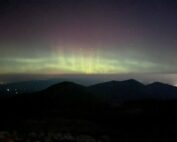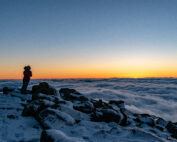A Look at The Big Wind and Measuring Extreme Winds at Mount Washington
By Alexis George
Ninety-one years ago on April 12th, Mount Washington Observatory recorded a world-record wind speed of 231 mph. While a higher wind speed has been recorded elsewhere (Tropical Cyclone Olivia, Barrow Island, Australia on April 10, 1996) the Observatory’s measurement of 231 mph on April 12, 1934 still stands as the fastest wind speed ever recorded by a staffed weather station.

Sea-level pressure analysis valid 9:00 a.m. EST on April 12, 1934, just hours before the 231 mph gust. A low pressure system centered just south of New England intensified and tracked slowly northwest during the day. From the U.S. Weather Bureau (now the National Weather Service)
Measuring wind speeds has always been a challenge at the Observatory, even since the earliest days of observing the weather. In the winter at Mount Washington, heavy icing and extreme winds can damage measurement devices. To this day, there are no commercially available instruments that could survive a Mount Washington winter and accurately measure wind speeds throughout the cold season. So, Mount Washington Observatory has accomplished numerous innovations in measuring wind speeds at the summit through developing heated anemometers. Adding a heated element to the device allows the instruments to survive the extreme icing and cold, and the Observatory has improved on the custom designed heated pitot anemometer since its founding.
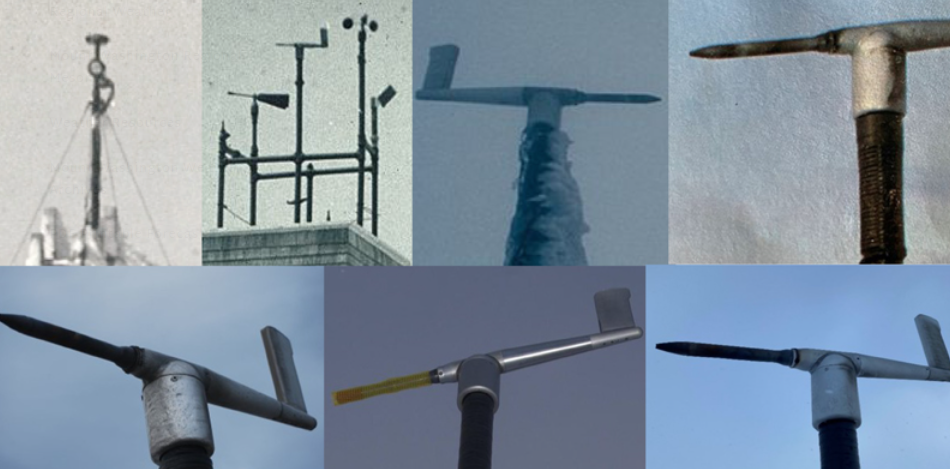
A range of anemometers designed and used during the Observatory’s history, shown above clockwise from top left are the Heated No. 2, Grandfather Pitot, Pitot 92, Pitot 94, Pitot 97, Pitot 11, and Pitot 19 (which is still used today).
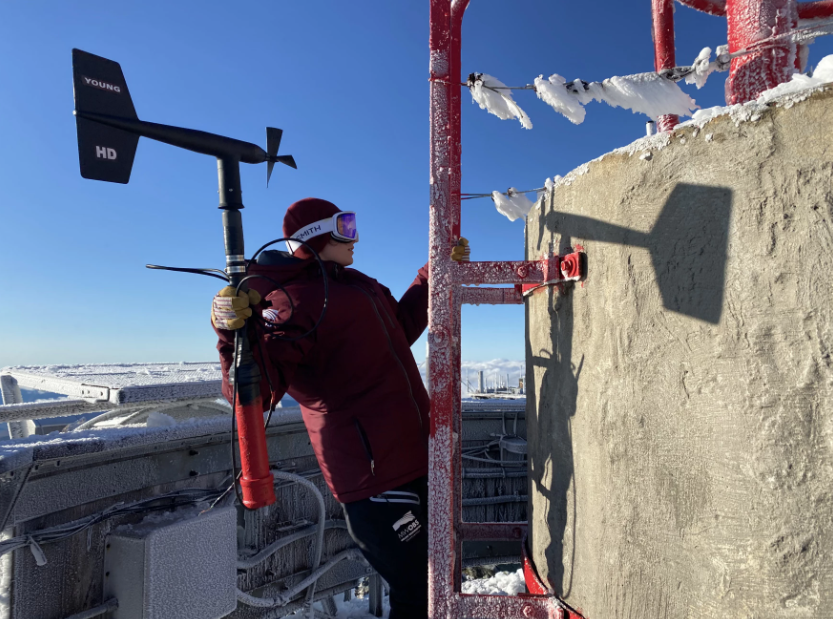
Weather Observer and Education Specialist, Alex Branton, holding an RM Young propeller-driven anemometer.
To combat the icing conditions, the heated anemometer called Heated No. 1 was developed and implemented in November of 1932 at the summit. Another anemometer called Heated No. 2 replaced No. 1, and Heated No. 2 is most famous for recording The Big Wind of 231 mph on April 12, 1934. The 231 mph was measured in extremely challenging icing conditions and the measurement was extensively verified afterwards, which set the standard of data quality for Mount Washington Observatory weather observers throughout history. The Heated No. 2 anemometer is currently on display in the Extreme Mount Washington museum on the summit.
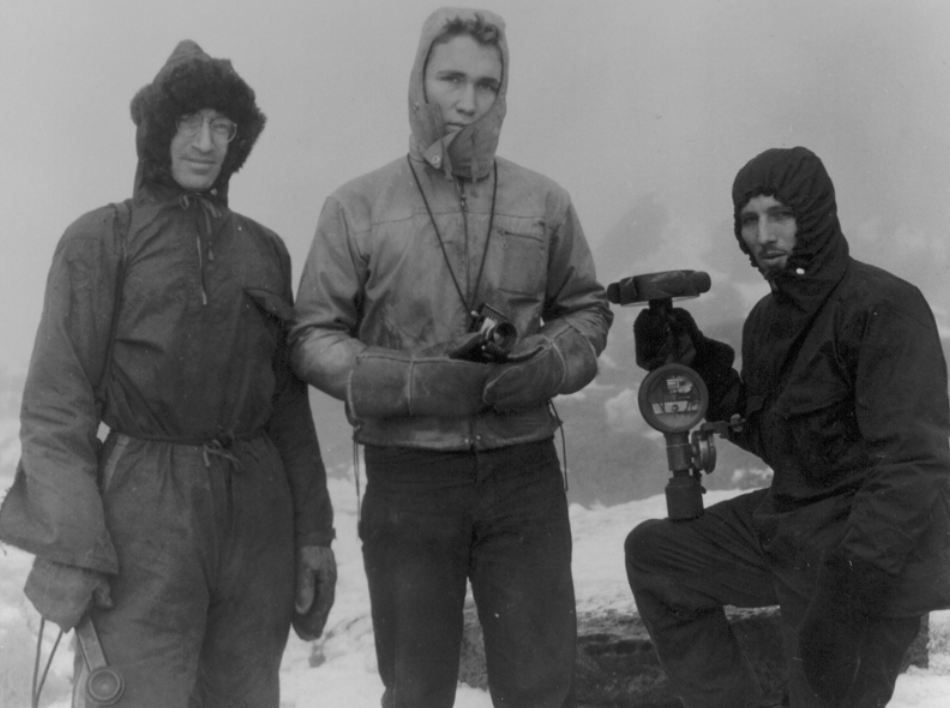
Mount Washington Observatory staff Alex Mckenzie, left, John Dick, and Aubrey Hustead, holding the Heated No. 2 Anemometer.
It’s hard to imagine what a 231 mph wind gust would have felt and sounded like, especially from inside a building constructed several decades earlier and at a different location on the summit. I can only assume that the dedicated mountaintop weather observers felt fear as 200+ mph winds buckled the early 1930’s structure that protected them from the brute force of the winds.
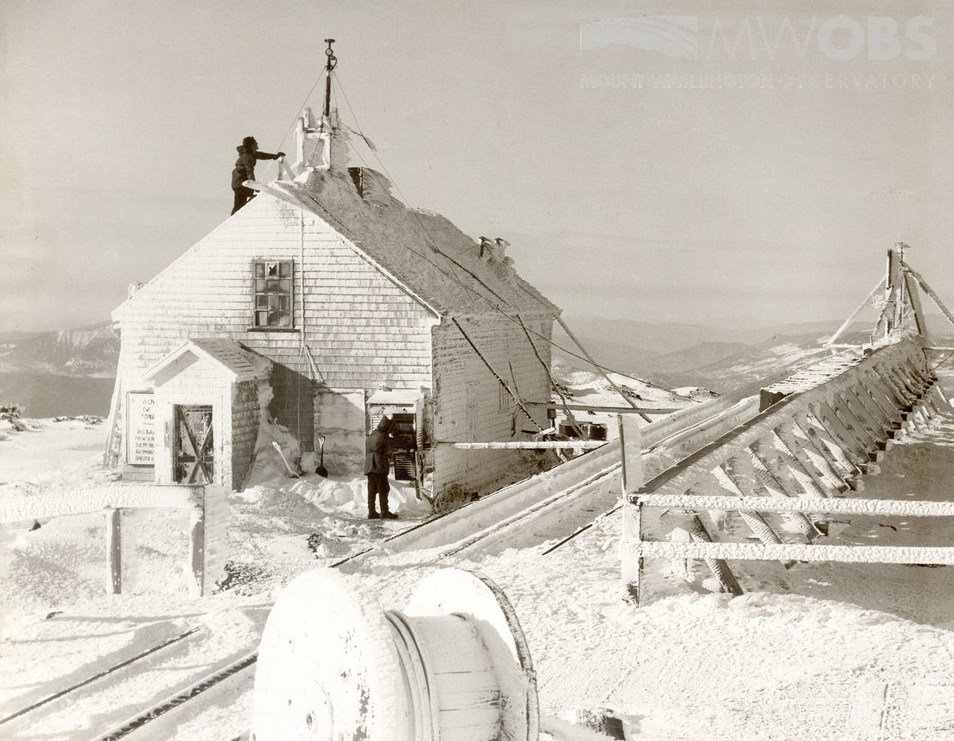
Unknown weather observers tending to their duties in the original Observatory building.
Regardless, the observers continued to meticulously record their weather observations and maintain the instruments through it all, and their unwavering conviction made history on that fateful April day. Below, is a page written by on-duty observer Sal Pagliuca, about the recording of the Big Wind.
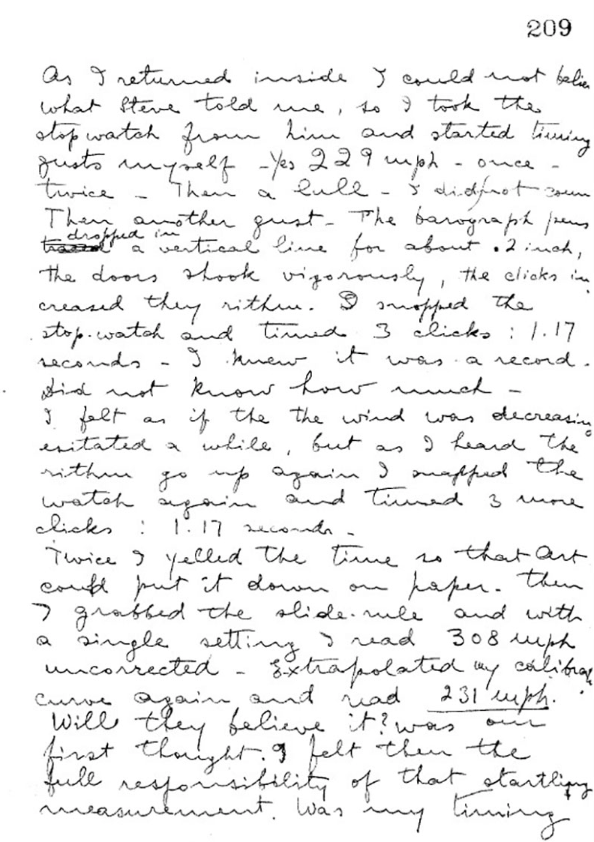
It’s awe-inspiring to me to ponder the long history of observers that came before us and their dedication to the same cause we work hard to support to this very day. 91 years later, I am glad to have the privilege to continue the work of the observers that came before me and work in the very location in which The Big Wind of 231 mph took place!
From Weather Observer to Intern, to Observer Again
From Weather Observer to Intern, to Observer Again By Madelynn Smith As I rode in the backseat of our Obs van up the Auto Road for the first time as a full-time employee at
From Mountains to More Mountains
From Mountains to More Mountains: This Time with Stronger Winds By Alyssa Bélanger On the observation deck in high winds. Hello there! My name is Alyssa Bélanger and I am a fall
From Summit to Sign-Off: My Farewell to the Rockpile
From Summit to Sign-Off: My Farewell to the Rockpile By Amy Cotter Enjoying my last Mount Washington sunset (for now) on September 13, 2025. After two incredible years with the Mount Washington


